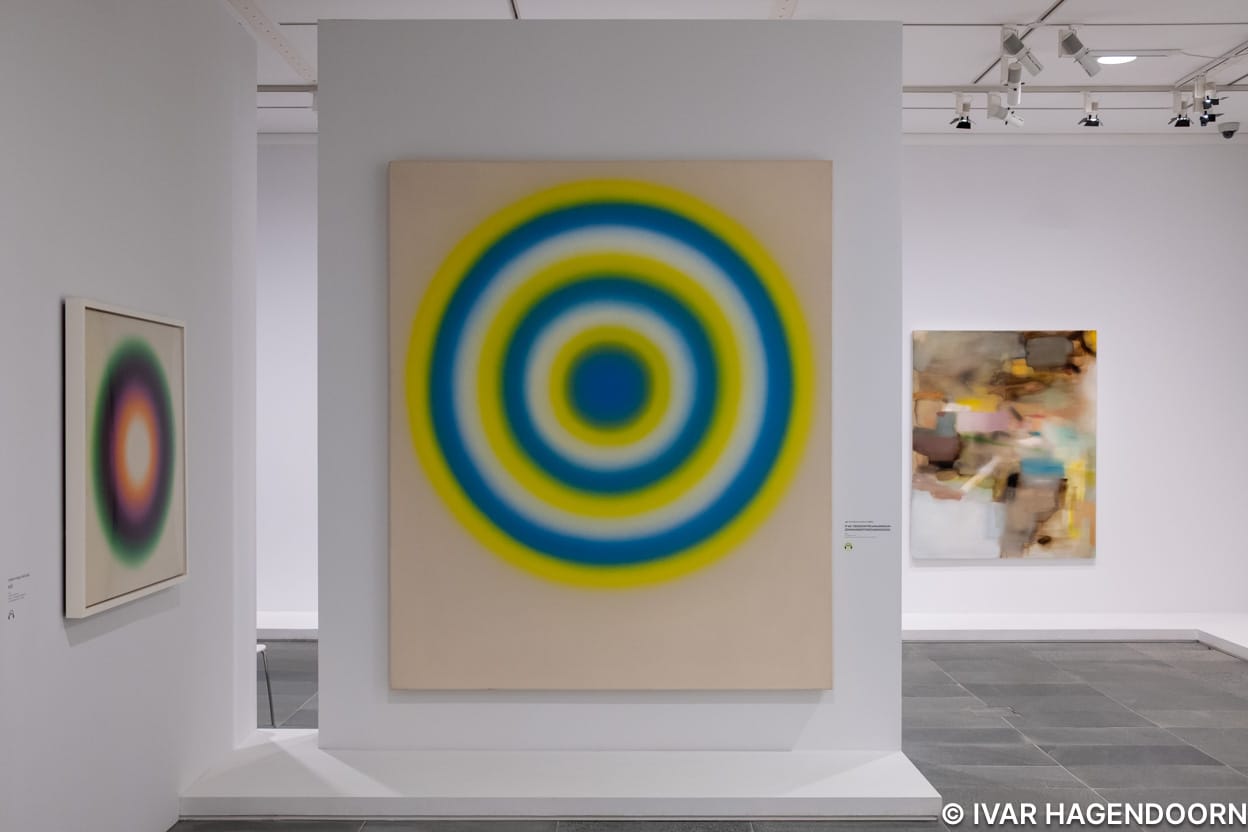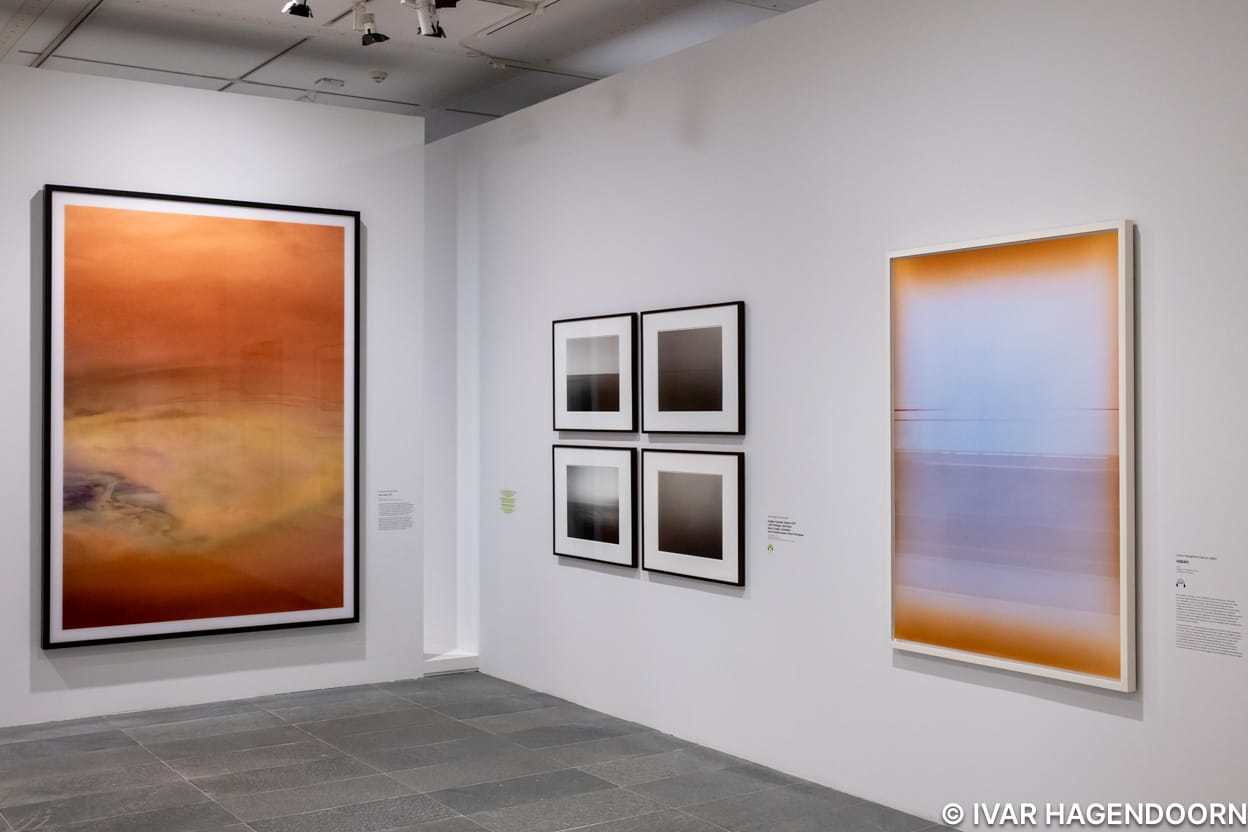
This is the fourth time in as many years that I have visited the Musée de l’Orangerie in Paris, which is why I was initially a bit hesitant to visit the latest temporary exhibition, Out of Focus. Another Vision of Art from 1945 to the Present Day. I’m glad I did, because it turned out to be a lot more interesting than I’d expected, not in the least because the organizers brought together a number of high quality works by the likes of Hans Hartung, Gerhard Richter, Sigmar Polke, Mark Rothko, Christian Boltanski, Francis Bacon and Bill Viola, to name but a few. I was also happy to discover that part of the permanent collection had recently been rehung.
The exhibition “Dans le Flou” reframes Claude Monet’s "Water Lilies" and the broader modern and contemporary art canon through the lens of blurriness, or le flou in French. Originally defined as a “loss of distinctness,” blurriness has become a preferred means of expression in a world marked by instability and uncertainty. Following the devastation of the Second World War, traditional ideals of clarity and precision in art appeared inadequate. Artists turned instead to the indeterminate, embracing disorder, incompleteness, and blurriness.
In the opening section the curators connect the blurry aesthetic to Renaissance sfumato, the atmospheric dissolves of William Turner, and the Symbolists’ explorations of inner states. Early photography’s embrace of soft focus is presented as a means of asserting artistic subjectivity over mechanical precision. These examples show that the out-of-focus aesthetic has long been a tool for expanding the emotional and conceptual range of representation.
The exhibition consists of four thematic sections: “At the Frontier of the Visible”, which investigates the perceptual boundaries of sight; “Erosion of Certainties”, which situates blurriness in historical and political contexts; “In Praise of the Indistinct”, which links blurred imagery to questions of identity; and “Uncertain Futures”, which explores blurriness as a response to contemporary uncertainties and which is perhaps best exemplified by Mircea Cantor’s photograph of the words “Unpredictable Future” written on a fogged-up window.
Following World War II, faced with the horrors of the Holocaust, artists such as Christian Boltanski and Zoran Mušič resorted to blurriness to evoke the unrepresentable, forcing viewers to linger and confront unsettling truths. This strategy has carried forward into depictions of more recent crises, as in Gerhard Richter’s and Thomas Ruff’s response to the 9/11 attack on the World Trade Center.

In contemporary practice, some artists use blurriness to address issues related to identity and self-representation. For others, like Hiroshi Sugimoto, blurred imagery serves as a meditative gateway.
Photography manuals used to offer guidelines on how to prevent blurry, out-of-focus photographs. But as demonstrated by a large collage of amateur photographs they may also capture a moment of authenticity. Or as Wittgenstein remarked in Philosophical Investigations (71): “Is an indistinct photograph a picture of a person at all? Is it even always an advantage to replace an indistinct picture by a sharp one? Isn’t the indistinct one often exactly what we need?”
Ultimately, “Dans le Flou” presents blurriness as both a mirror and a counterpoint to the instability of the modern world. In rejecting rigid clarity, artists create works that require active interpretation, foregrounding the viewer’s role in meaning-making. This is not blurriness as deficiency but as a deliberate artistic strategy capable of political critique, emotional resonance, and philosophical depth. By bringing together historical, theoretical, and contemporary perspectives, the exhibition reclaims the blurry as a distinct and potent form in its own right, one that both reflects and reshapes our vision of reality.
Dans le Flou, une autre vision de l’art de 1945 à nos jours is at the Musée de l’Orangerie in Paris until 18 August 2025.
Links
Robert Ryman. The Act of Looking at the Musée de l’Orangerie.
Matisse at the Musée de l’Orangerie.
Masterpieces from the Museum Berggruen at the Musée de l’Orangerie.